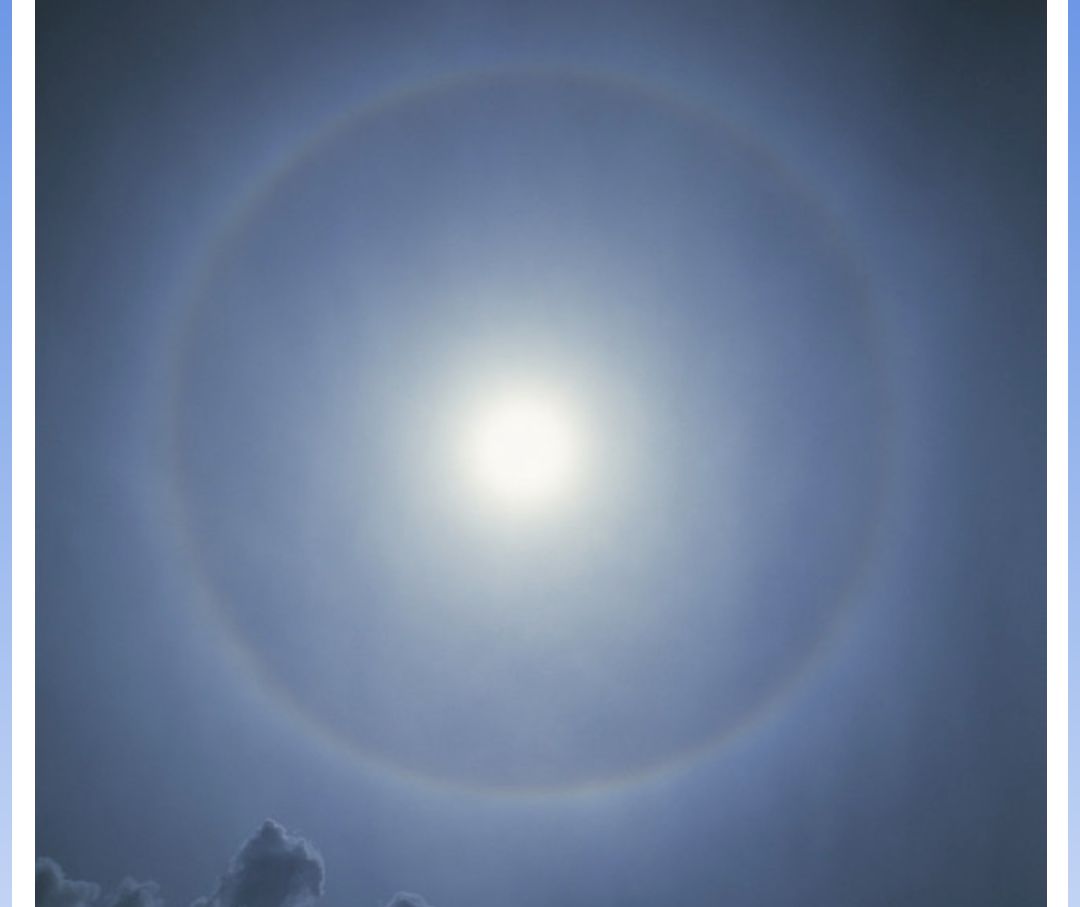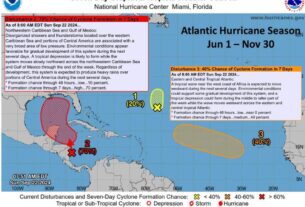**** Info via Environment Canada
Nature’s forecast
You have no doubt already noticed signs in nature that seem to herald the coming weather. Here are a few signs that generally announce bad weather to come:
A halo around the sun
As a warm front approaches, cirrostratus clouds thicken and cover the entire sky. These very high clouds are thin enough to let the light through, making the sky look white instead of blue. As the sun’s rays pass through the clouds, they are refracted (reflected at a specific angle) by ice crystals, creating a halo effect around the sun.
Cirrostratus clouds usually precede a low-pressure system, which brings bad weather. As the low approaches, cirrostratus clouds are replaced by altostratus clouds which are thicker and then finally by nimbostratus clouds which bring rain. The sky is grey and it’s time to go inside! As the saying goes, “When the sun has a halo, rain to follow.”
Closed Cones
Cones, specifically spruce and pine cones, react to the humidity level in the air. Why does this happen? When a cone is mature, it needs a dry and windy day to spread its tiny, samara-like seeds far and wide. To protect them at the end of their development, the cone has a moisture-sensitive mechanism and closes.
As a low-pressure system approaches, the humidity level in the air increases and the cone will close as the rain becomes imminent. In fact, it is a neat experiment to try at home by immersing a cone in water and watching it close!
Pale leaves
The leaves grow in the spring under the prevailing western winds. Consequently, the leaf is oriented to maximize its exposure to the sun. In fact, the leaves of some deciduous trees such as maple, beech and aspen are paler underneath.
As a cold front approaches, the wind often comes from the southeast, lifting the leaves at an angle that causes them to turn, exposing a paler surface. So if the leaves are twisting to their lighter side, it’s time to go inside. There may soon be a shower or thunderstorm.
Low Flying Birds
Most birds have an organ in their middle ear, called the Vitali organ, which allows them to sense changes in air pressure. When a storm approaches, the pressure can drop rapidly. These changes can be very painful for birds; to relieve the discomfort, large birds fly lower than usual, while small birds often stay very close to the ground. Additionally, small songbirds tend to keep quiet. This is the calm before the storm.
In addition to atmospheric pressure, some birds can hear the infrasound of a distant rumble, warning them of a coming storm.
Do you know of any other signs from nature to predict the weather? Share them on our Facebook page – Environment and Climate Change Canada – Weather.




